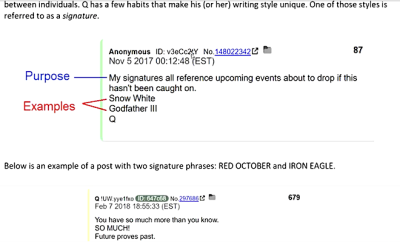Spiritual Warfare
THIS WILL BLOW YOU AWAY: The Blood of Jesus Was Tested in a Lab…
from A & Ω Productions:
Biggest Discovery Ever Made! Blood of Jesus Tested in Laboratory the Results will Blow your Mind
VIDEO:
This discovery will probably never make it to mainstream media world wide, because the discovery was met by strong recistance by higher powers and sadly few people know about this. Therefore, I suggest that you behind the screen, share the clip as freshly as you can to friends and family. Spread the word! JESUS IS ALIVE Ron Wyatt discovered the Ark of the Covenant, and, as a totally unexpected second discovery, to his astonishment found the blood of Christ on its Mercy Seat. A DNA analysis proved the miraculous nature of the blood. Ron Wyatt’s discovery should have made international front page news, but was largely blacked out by the corporate news media. It was quietly but excitedly reported on by the Christian news networks. When scientist Richard Rives tested the dried, two-thousand-year-old “dead” blood, he was able to analyze its chromosomes—which is only possible with living blood. Upon further analysis, the blood was found to contain twenty-three chromosomes from the mother (Mary)—as is normal—but only one “Y” chromosome from the Father (God)—which should have been impossible, as regular humans have 23 chromosomes from mother and 23 from the father—a total of 46! Four samples of the literal, physical blood of Jesus Christ have been discovered and tested: one taken from the Shroud of Turin, another obtained from the Veil of Veronica, one from Ron Wyatt’s archeological dig beneath the cruxifixction site, and another brought back by the Knights Templar. All four blood-related relics have been associated with numerous miracles and subjected to rigorous scientific testing, the synthesis of scientific and phenomenological evidence, for some, “proof of Jesus”. The initial steps towards the scientific study of the Shroud of Turin and the blood of Jesus imbedded in the relic were taken soon after the first set of black and white photographs became available early in the 20th century. In 1902 Yves Delage, a French professor of comparative anatomy, published the first study on the subject. Delage declared the image anatomically flawless and argued that the features of rigor mortis, wounds, and blood flows were evidence that the image was formed by direct or indirect contact with a corpse. William Meacham mentions several other medical studies between 1936 and 1981 that agree with Delage. However, these were all indirect studies without access to the shroud itself. The first direct examination of the shroud by a scientific team was undertaken in 1969–1973 in order to advise on preservation of the shroud and determine specific testing methods. This led to the appointment of an 11-member Turin Commission to advise on the preservation of the relic and on specific testing. Five of the commission members were scientists, and preliminary studies of samples of the fabric were conducted in 1973.














